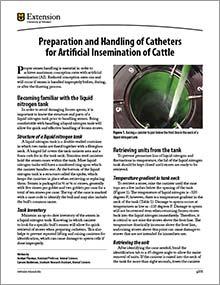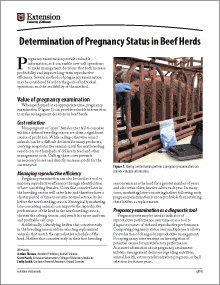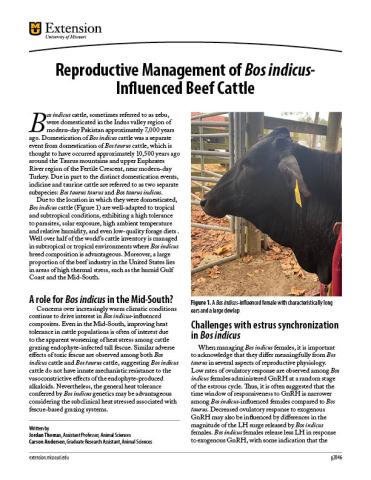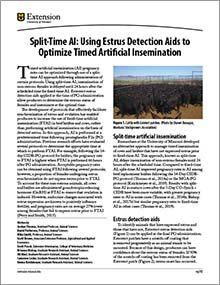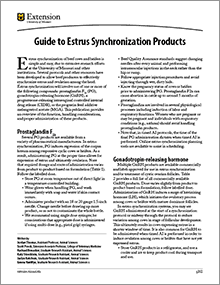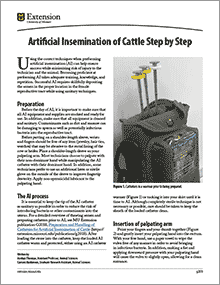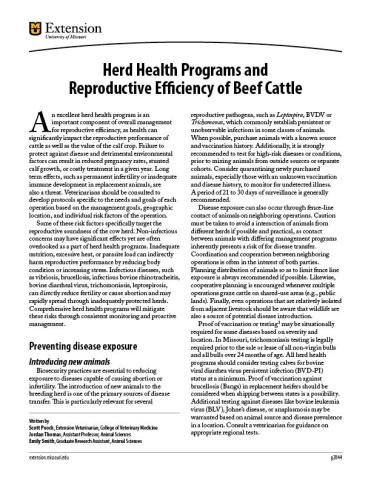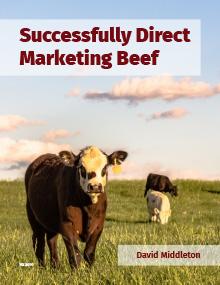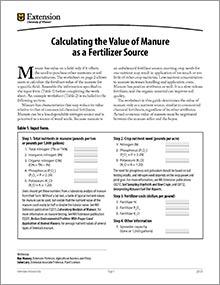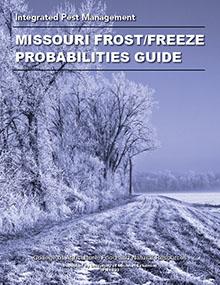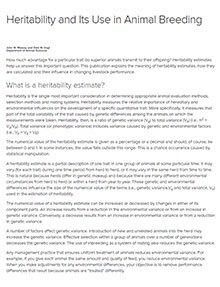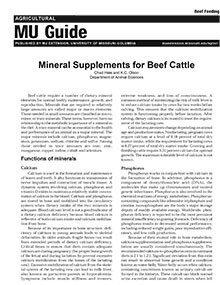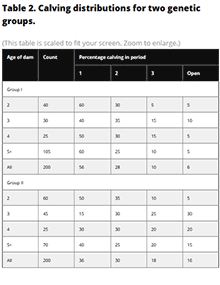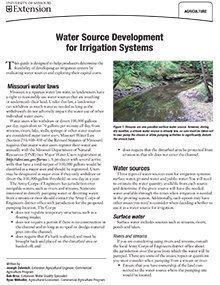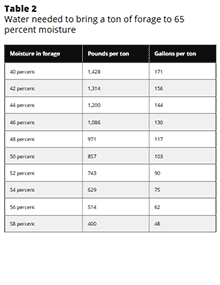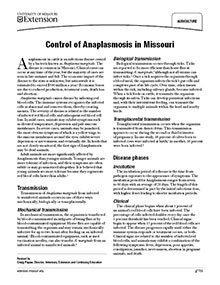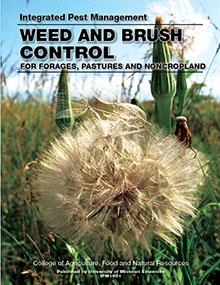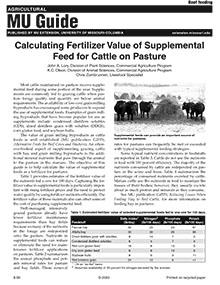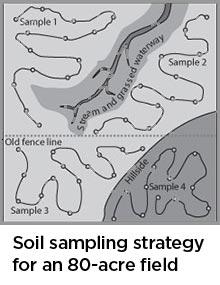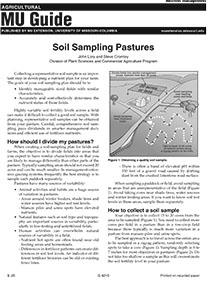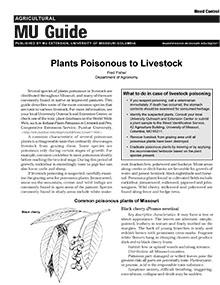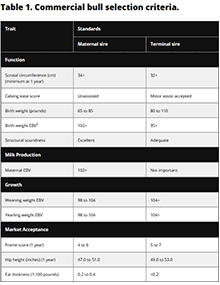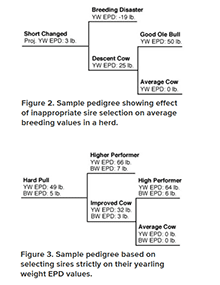The following publications cover topics related to Beef Extension. For a complete list of MU Extension publications, visit the main Publications page.
Preparation and Handling of Catheters for Artificial Insemination of Cattle
New
Learn proper semen handling to achieve maximum conception rates with artificial insemination in beef cattle. Reduced conception rates occur if semen is handled improperly before, during or after thawing. See this illustrated MU Extension guide for more.
Determination of Pregnancy Status in Beef Herds
New
Pregnancy examination provides valuable information that enables cow-calf operations to make management decisions that increase profitability and improve long-term reproductive efficiency. Learn about several methods in this MU Extension guide.
Reproductive Management of Bos indicus-Influenced Beef Cattle
New
Bos indicus cattle present challenges with estrus synchronization. Learn about the timing of estrus onset for them, their susceptibility to stress, and considerations and expectations when breeding them in this University of Missouri Extension guide.
Split-Time AI: Using Estrus Detection Aids to Optimize Timed Artificial Insemination
Revised
Timed artificial insemination pregnancy rates in heifers can be optimized with a split-time AI approach. Estrotect estrus detection aids allow producer to determine the estrous status of females. Learn about the protocols in this MU Extension guide.
Guide to Estrus Synchronization Products
Revised
Several protocols and other resources allow beef producers to effectively synchronize estrus and ovulation in the herd. Read this guide for an overview of the function, handling considerations, and proper administration of estrus synchronization products.
Artificial Insemination of Cattle Step by Step
New
Using correct techniques when performing artificial insemination on beef cattle can help ensure success and minimizing risk of injury. Learn how to deposit the semen in the proper location in the female reproductive tract while using sanitary techniques.
Herd Health Programs and Reproductive Efficiency of Beef Cattle
New
An excellent herd health program is an important component of overall management for reproductive efficiency in a beef cattle operation. Learn ways to mitigate health risks through consistent monitoring and proactive management in this MU Extension guide.
Successfully Direct Marketing Beef
New
Get tips on direct marketing beef in this 32-page publication.
Missouri Grazing Manual
Reviewed $20
Learn how soil, forages and animals interact in grazing systems, and get ideas for improving pasture quality and extending the grazing season for beef or dairy.
Calculating the Value of Manure as a Fertilizer Source
Revised
Use this worksheet to estimate the value of manure nutrients (nitrogen, phosphorus, potassium) and gauge how much manure to apply to corn, wheat, soybeans.
Missouri Frost/Freeze Probabilities Guide
Reviewed
Where in Missouri you live can make a big difference on when to expect your first or last frost. See this guide for probabilities based on past years.
Heritability and Its Use in Animal Breeding
Reviewed
Heritability has a large influence on livestock performance. Visit our website to learn about Heritability and Its Use in Animal Breeding.
Vitamins for Beef Cattle
Reviewed
Vitamin needs of beef cattle can be confined largely to A, D and E. This is because bacteria in the rumen of cattle are considered to have the ability to synthesize vitamin K and the B vitamins in sufficient quantities to meet the animal's requirement.
Mineral Supplements for Beef Cattle
Reviewed
Beef cattle require a number of dietary mineral elements to remain healthy. Visit our site to learn about Mineral Supplements for Beef Cattle.
The System Concept of Beef Production: BIF Fact Sheet
Reviewed
The systems concept of beef production incorporates an awareness that there is more to consider in a beef cattle enterprise than simply the level of production. What is most important is the overall efficiency of the enterprise.
Wheat Silage for Beef Cattle
Reviewed
Wheat, barley and oat silages are often underrated as feed for growing and finishing beef cattle. Studies show barley silage as being equal to corn silage, but they show that oat silage has about 50 percent the value of corn silage in beef rations.
Weed and Brush Control for Forages, Pastures and Noncropland
New $41
Annual broadleaf and grass weeds can become a serious problem in pastures and forages. Learn about forage crop, soil and weed problems in Missouri. See color photos of weeds at different stages and select herbicides with the help of tables in this manual.
Soil Sampling Hayfields and Row Crops
New
Collecting a representative soil sample is an important step in developing a nutrient plan for your farm. Make smarter management decisions and more efficient use of fertilizer nutrients by learning how to plan and take soil samples from your fields in th
Soil Sampling Pastures
New
Collecting a representative soil sample is an important step in developing a nutrient plan for your farm. The goals of your soil sampling plan should be to
Plants Poisonous to Livestock
Reviewed
Guide to identifying common Missouri plants toxic to livestock, including symptoms and habitats.
Using Performance Data in Judging Classes: BIF Fact Sheet
Reviewed
Judging contests are an important educational tool. Someday young cattle producers will be faced with selection decisions that affect the profitability of their operations. This guide can be used to train youth interested in modern beef selection practices.1
Understanding and Using Sire Summaries: BIF Fact Sheet
Reviewed
Sire selection is one of the most important decisions cow/calf producers make. If it is effective, sire selection will account for nearly 90 percent of the genetic improvement in a herd.
